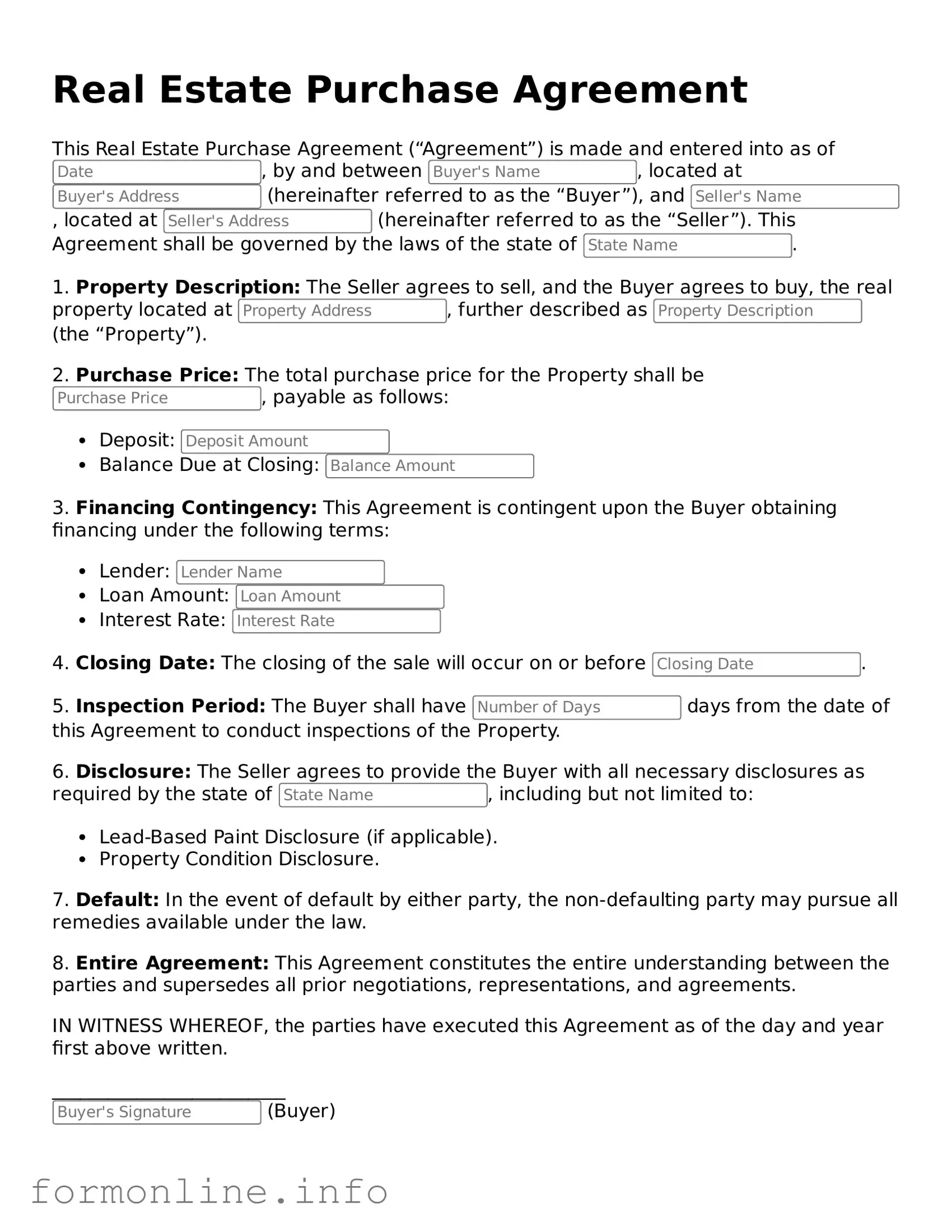The Real Estate Purchase Agreement (REPA) is similar to a Lease Agreement in that both documents outline the terms under which property is used or transferred. A Lease Agreement allows one party to use a property owned by another for a specified period, usually in exchange for rent. Like the REPA, it details obligations, rights, and conditions, ensuring both parties understand their responsibilities. While the REPA culminates in ownership transfer, the Lease Agreement maintains the landlord-tenant relationship, emphasizing the temporary nature of the arrangement.
Another document akin to the Real Estate Purchase Agreement is the Option to Purchase Agreement. This agreement grants a potential buyer the right, but not the obligation, to purchase a property within a specified timeframe. Similar to the REPA, it outlines the purchase price and terms, but it allows for flexibility. The buyer can decide whether to proceed with the purchase, providing a unique opportunity to secure a property without immediate commitment.
The Seller's Disclosure Statement shares similarities with the REPA, as it is often provided during the home buying process. This document requires sellers to disclose known issues or defects related to the property. Like the REPA, it aims to protect buyers by ensuring they are fully informed before making a significant financial commitment. Transparency is key in both documents, helping to avoid disputes after the sale.
The Purchase and Sale Agreement (PSA) is another document that closely resembles the REPA. The PSA outlines the terms of a real estate transaction, similar to the REPA, including purchase price, closing date, and contingencies. While the terminology may differ slightly, both documents serve the same purpose: to formalize the agreement between buyer and seller, ensuring clarity and reducing the risk of misunderstandings.
A Financing Agreement can also be compared to the Real Estate Purchase Agreement. This document details the terms under which a buyer borrows money to purchase property. Like the REPA, it specifies the amount, interest rate, and repayment terms. Both agreements are crucial in the real estate transaction process, as they define the financial obligations that accompany property ownership.
The Escrow Agreement bears resemblance to the REPA as well. This document establishes a neutral third party to hold funds and documents until all conditions of the sale are met. While the REPA focuses on the terms of the sale itself, the Escrow Agreement ensures that both parties fulfill their obligations before the transaction is finalized. This protective measure adds an extra layer of security for both buyers and sellers.
In addition to the important documents mentioned, another essential form in the realm of property transactions is the Mobile Home Bill of Sale, which facilitates the legal transfer of ownership for mobile homes, ensuring all pertinent details are documented and agreed upon by both parties involved.
The Title Insurance Policy also shares characteristics with the Real Estate Purchase Agreement. This document protects the buyer against potential defects in the title of the property. While the REPA outlines the terms of the sale, the Title Insurance Policy ensures that the buyer is safeguarded against unforeseen claims or issues that may arise after the purchase. Both documents work together to provide a secure and informed transaction.
Lastly, the Closing Statement is similar to the Real Estate Purchase Agreement in that it summarizes the final financial details of the transaction. This document outlines the costs, fees, and adjustments associated with the sale. Like the REPA, it is crucial for transparency, ensuring that both parties understand the financial implications before finalizing the purchase. Clarity in the Closing Statement helps prevent surprises at the closing table.
